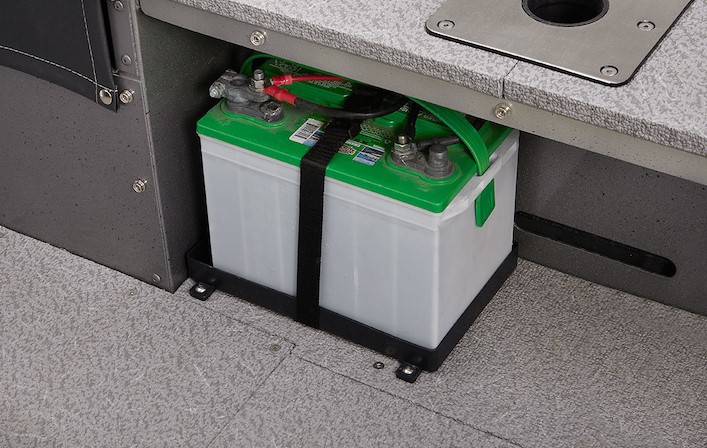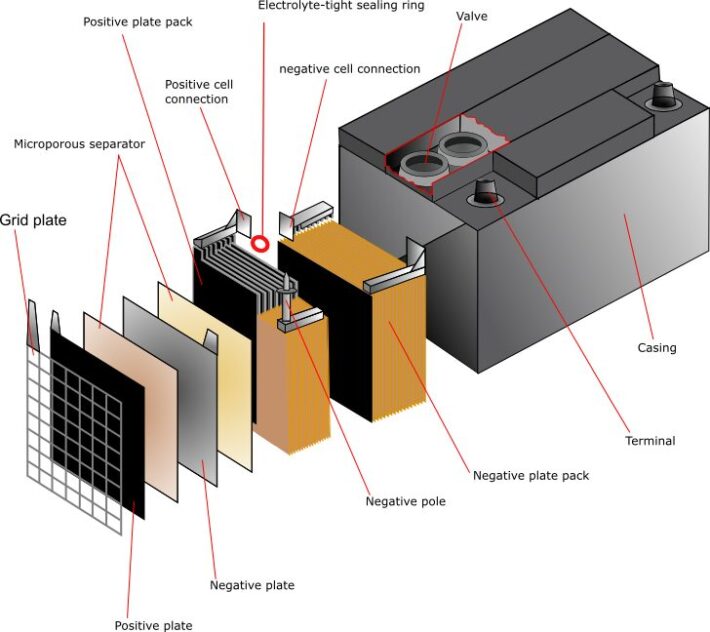If you want to get the most out of your batteries, then you must pay heed to its maintenance. For those of you who don’t know, deep cycle batteries are the most cost-effective batteries you can purchase for your vehicles. The store excellent amount of energy and never let you drive with no backup plan.
The most common type of deep cycle battery you’re going to come across is the flood lead-acid deep cycle battery. They are designed in such a way that you can extract most of their power efficiently. However, to enhance the longevity of the battery and to keep you safe, you need to maintain it properly or all your money and potential will go into vain.
Lead-acid car batteries, as mentioned before, are the most common type of batteries being used by most vehicle owners. These batteries date back to 1800s and to this day, their power and the level of efficiency they offer cannot be compromised or questioned.
However, this isn’t the only type of battery available out there. There are several deep cycle batteries out there that you can check out just by following the link. Let’s talk about how you can maintain a battery and extract its maximum potential. Check here to know more.

Correct charging is so important
One of the most efficient ways to maintain your deep cycle battery starts from the very first time you recharge your battery. You need to adjust the timings of your chargers adequately so they not only provide you backup power source but also keep your batteries up and running.
The chargers work in three different ways,
- Bulk: This brings the battery to a bulk charge of 80%
- Absorb: This is the final 20% of remaining charging
- Float: This keeps a trick charge when the charging has reached 100%
You need to make sure that you have programmed these charging points accurately because if you don’t, your battery life will suffer exponentially. The programming is simple; you just need to set the charger at a specific voltage.
Along with setting the voltage, you also need to set the time duration that how long will your battery will remain in each phase i.e. bulk, absorb and float. Also, if you’re living in a warm climate, make sure you have set the last phase correctly.

When to recharge your battery
We always suggest to limit the discharge to at least 50%. Try and recharge whenever you want and can. Also, don’t forget to make your charger go through a whole charge cycle so it can effectively work with your battery.
Maintaining electrolyte balance
Keeping a check on the electrolyte count of your batteries and making necessary adjustments is another bridge you need to cross when wanting to maintain a deep cycle battery. Don’t forget to add distilled water every 3-4 weeks.
Having the perfect electrolyte balance is the key to having your battery work to its full potential. It improves the performance of any deep cycle battery and also enhances its lifespan.

Use a refractometer to measure charge
If you don’t know what a refractometer is and how do they work, you don’t have to worry. You will find detailed tutorials on YouTube where you won’t only learn how refractometers work but will also understand their mechanism.
A refractometer is responsible for measuring the exact gravity of a battery. When you know what the gravity is of a deep cycle battery, you will be able to calculate how charged your battery is. Every deep cycle battery has a different gravity so we cannot put them all in a single box.
You should check its gravity once the battery has completed an entire charge cycle. If the battery still isn’t fully charged, then it means there is something wrong with it. That is why a refractometer is used so it can help you diagnose such problems.

Equalizing charge
Another important aspect to keep in mind is that batteries are made out of cells. Over time, it is very possible that these cells might become unaligned it means that not every cell in the battery holds an equal charge. This will affect your battery’s health drastically.
Now, you can conveniently remove this threat by carrying out equalized charge. This bring everything back to the default order.
Equalizing is easy. First you have to check the water and then consult the battery’s manufacturer. They will let you know at what voltage you need to keep your charger and then recharge your battery. Once the charging is complete, take calculations from the refractometer. If the gravity stops going up that means your battery cells are aligned perfectly.

Maintain the battery temperature
Another important thing to do when maintaining your deep cycle battery is to keep it at a stable temperature. The ambient temperature that surrounds your battery can greatly damage its functionality.
In hot climates, battery’s lifespan falls whereas in cold climates, its capacities fall. So, you need to go around this and during the recharge, calculate your battery’s temperature readings. Your battery is possibly going to need more voltage per cell during winters as compared to summers.
Also, in case your battery’s charger doesn’t give you information regarding its temperature then try investing in a new charger.
Conclusion
So, this is everything we had on how to maintain a deep cycle battery. We know the entire process may seem quite overwhelming but it’s for your own benefit. The longer your battery’s lifespan lasts, the more you will be able to save on it.
Most deep cycle batteries can last for years but if and only if they are maintained efficiently. We hope the article gave you all the insight you needed. If you have anything you’d like to add to these tips, do let us know through your feedback below.
The post How To Maintain A Deep Cycle Battery? appeared first on FotoLog.
from FotoLog https://ift.tt/3iFBiVl
via IFTTT


0 Comments